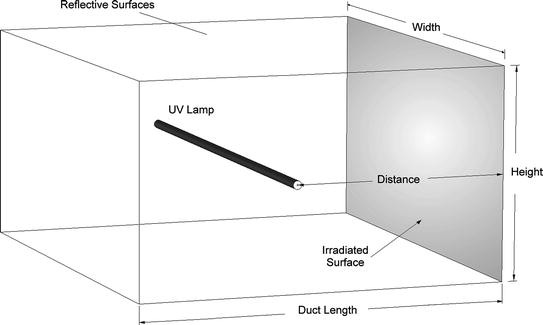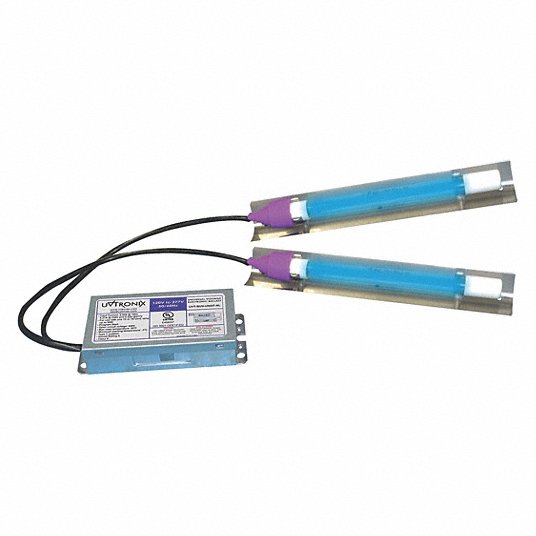Using the Power of UV Surface Disinfection: A Comprehensive Guide for Healthier Spaces
Using the Power of UV Surface Disinfection: A Comprehensive Guide for Healthier Spaces
Blog Article
Utilizing the Possible of UV Sanitation: Safeguarding Wellness and Health
UV sanitation, a technology extensively utilized in different sectors, has confirmed efficient in removing dangerous microorganisms. From understanding the systems at play to implementing this modern technology in our day-to-day lives, this discussion intends to shed light on the possibility of UV sanitation and its role in protecting our health and health.
Understanding UV Disinfection
UV disinfection is a highly efficient and commonly made use of approach for ensuring and eliminating damaging microorganisms health and wellness and health. This method uses ultraviolet (UV) light to suspend microbes by harming their DNA and preventing them from reproducing. UV disinfection is especially efficient against microorganisms, viruses, and other bacteria that can trigger infections and diseases.
The principle behind UV disinfection is basic yet effective. When UV light is released at a details wavelength, it penetrates the bacterium's cell wall and disrupts its genetic product. This process, known as photodissociation, causes the formation of thymine dimers, which protect against the bacterium from duplicating and rendering it harmless. UV sanitation can be applied in various setups, consisting of water treatment plants, healthcare centers, food processing industries, and air filtration systems.
One of the advantages of UV sanitation is its capability to effectively and successfully get rid of a vast array of pathogens without the demand for chemicals or ingredients. Unlike various other disinfection approaches, such as chlorine or ozone, UV sanitation does not introduce dangerous spin-offs or chemical deposits right into the environment. Furthermore, UV sanitation is a non-contact process, which suggests that it does not need physical call with the microorganisms, minimizing the danger of cross-contamination.

The Science Behind UV Sanitation
The efficiency of UV sanitation exists in its capacity to interfere with the genetic material of microorganisms, making them not able to reproduce and therefore eliminating their hazardous capacity. This high-energy UV-C radiation is most efficient in sanitation applications due to the fact that it can pass through the cell wall surfaces of microorganisms and damage their DNA or RNA.
When microorganisms are subjected to UV-C radiation, the energy is taken in by their hereditary product, triggering bonds to damage and forming chemical reactions that interrupt their ability to duplicate. This prevents the microorganisms from spreading out and reproducing infection. UV sanitation is particularly reliable versus bacteria, fungis, and infections, consisting of usual virus such as Escherichia coli, Salmonella, and Influenza.
The science behind UV sanitation is sustained by substantial research study and studies. It has actually been revealed that exposure to a sufficient dosage of UV-C radiation can attain a high level of disinfection, often going beyond 99.9% effectiveness in killing microbes. Nevertheless, it is crucial to note that the performance of UV disinfection depends on numerous elements, including the strength of UV-C radiation, exposure time, range from the UV resource, and the vulnerability of the microorganism to UV radiation.
Applications of UV Sanitation
Given the extensive study and efficacy of UV sanitation in disrupting the hereditary material of microbes, it is necessary to explore the different practical applications of this innovation. UV disinfection has proven to be a valuable device in a vast variety of industries where keeping a secure and clean environment is crucial.
One significant application of UV disinfection remains in health care settings. UV light can be utilized to sanitize surfaces, equipment, and also the air in healthcare facilities and medical centers. This assists to reduce the danger of healthcare-associated infections and guarantees a more secure environment for individuals and medical care workers.
One more essential application remains in the food and drink industry. UV disinfection is utilized to treat water and remove harmful pathogens, such as E. coli and Salmonella, from the production process. uv surface disinfection. This makes sure the safety and security and top quality of the items we consume
UV disinfection is likewise commonly utilized in water therapy plants and wastewater therapy centers. It is a reliable approach for destroying damaging bacteria, infections, and bloodsuckers that can be existing in water resources. This assists to supply risk-free and clean drinking water to communities and protect the environment from pollution.
In addition, UV sanitation is utilized in the pharmaceutical market to sanitize equipment and maintain the integrity of items. It is additionally utilized useful site in laboratories and research study facilities to stop contamination and make certain accurate outcomes.
Advantages of UV Disinfection Modern Technology
One remarkable advantage of utilizing UV sanitation technology is its capacity to properly get rid of microbes without using severe chemicals. This is particularly advantageous in numerous settings, such as check this healthcare centers, water therapy plants, and food processing sectors, where the visibility of dangerous microorganisms poses a substantial danger to public health and safety.
Unlike traditional sanitation methods that count on chemicals like chlorine or ozone, UV sanitation technology makes use of ultraviolet light to target and ruin the DNA of microbes, successfully neutralizing their ability to recreate and create infections. This procedure not only removes the demand for potentially unsafe chemicals however likewise lowers the threat of chemical residue or results remaining in the cured environment.

In addition, UV sanitation technology is eco-friendly. As it does not depend on the usage of chemicals, it removes the need for their production, disposal, and transport, lowering the total carbon impact connected with sanitation procedures. Additionally, UV disinfection systems have a longer lifespan compared to chemical-based methods, resulting in much less constant substitute and more lowering waste.
Implementing UV Disinfection in Life
To efficiently implement UV disinfection in life, people and companies can integrate portable UV sterilizing gadgets into their hygiene routines and cleansing techniques. These tools are created to send out ultraviolet light, which has been proven to eliminate or suspend a variety of bacteria, including infections, germs, and fungi. By making use of mobile UV sterilizing devices, people can decontaminate generally touched surface areas and items, such as cell phones, laptops, doorknobs, and keys, lowering the danger of spreading bacteria and infections.
In addition to including portable UV sanitizing gadgets, it is essential to comply with correct guidelines and recommendations for reliable UV disinfection. This consists of making sure that the device is utilized appropriately and for the suggested period to achieve optimum disinfection outcomes. It is also essential to focus on safety and security steps, such as putting on protective glasses and avoiding direct exposure of the UV light to the skin.

Additionally, organizations can execute UV sanitation modern technology in numerous settings to improve health techniques. Medical facilities and healthcare facilities can make use of UV sanitation robots visit here to sanitize client areas, running cinemas, and other high-touch locations. Food processing markets can incorporate UV sanitation systems right into their manufacturing lines to improve food safety and protect against contamination.
Verdict
In conclusion, UV sanitation innovation holds wonderful prospective in guarding health and health. By harnessing the power of ultraviolet light, it effectively gets rid of hazardous microbes and decreases the threat of infections. This modern technology can be applied in different settings, such as hospitals, water therapy centers, and public rooms, providing a safe and reliable method of sanitation. With its many advantages, UV sanitation is an important tool for keeping a tidy and healthy setting.
Unlike various other sanitation approaches, such as chlorine or ozone, UV sanitation does not present hazardous byproducts or chemical deposits right into the environment. It is essential to note that the effectiveness of UV sanitation depends on various elements, including the intensity of UV-C radiation, direct exposure time, distance from the UV resource, and the susceptibility of the microorganism to UV radiation.
One more benefit of UV disinfection innovation is its capability to supply rapid and constant sanitation. Unlike guidebook cleansing methods, which can be time-consuming and require significant labor, UV sanitation systems can be automated and operate continually, ensuring regular sanitation without human treatment.To efficiently execute UV sanitation in everyday life, individuals and companies can integrate portable UV disinfecting tools right into their hygiene regimens and cleaning up techniques.
Report this page